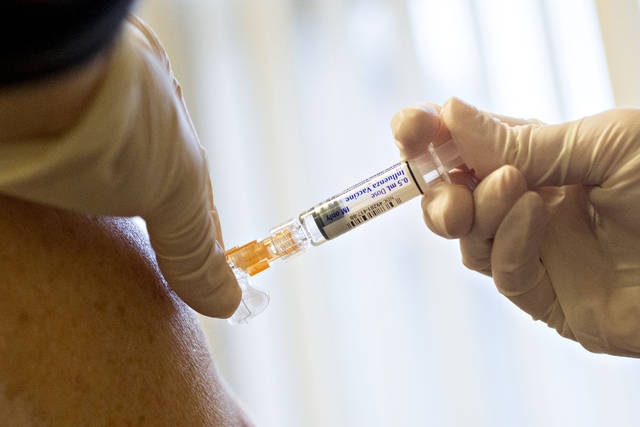https://triblive.com/local/pittsburgh-allegheny/flu-is-widespread-in-pennsylvania-but-numbers-are-down-from-last-year/
Flu is widespread in Pennsylvania, but numbers are down from last year

The flu is widespread in Pennsylvania for the first time this season, but overall numbers are down compared to last year.
Allegheny County has seen a dramatic drop in cumulative cases of the flu, just 126 so far this year compared with 1,241 in 2017-18. The cumulative number of hospitalizations is seven so far, down from 106 last year. No one in the county has died from the flu.
In Westmoreland County, flu cases are down sharply as well, according to Robin Jennings, a spokesperson for Excela Health.
There have been 30 cases in Westmoreland County this season, according to state Health Department data.
“During the entire month of December, Excela Health saw just four flu cases,” said Jennings. “We are not seeing an uptick in the flu here, which is why we have delayed declaring ‘Mask On’ for those employees who have not received a flu shot for this season.”
Still, medical experts say it’s important to get a flu shot. The widespread designation means all parts of the state are being struck by the virus. The virus has contributed to eight deaths statewide, so far, this season.
“What it means is that flu cases both nationally and locally are increasing rapidly in the last two to four weeks, which is typical for influenza activity in the United States,” said Dr. Marc Itskowitz, an internal medicine physician with Allegheny Health Network. “The flu can be spread person to person, so when there are gatherings of people, there is an easy mechanism to transfer the virus from person to person.”
While there are no indications that this flu season will be nearly as bad as last year’s, that can change in a hurry.
“At this time, we are not able to predict what type of flu season it will be,” said Dr. Karen Hacker, director of the Allegheny County Health Department.
The 2017-18 flu season was a severe one nationwide, with an unusually high number of hospitalizations and 256 deaths attributed to the flu in Pennsylvania alone.
“Last year was an outlier year that had several different factors going into it, including a poor vaccine match and a very low rate of vaccination,” said Dr. Amesh Adalja, a senior scholar at the Johns Hopkins Center for Health Security and a Pittsburgh-based infectious disease physician.
“The vaccine wasn’t completely at its optimal last season, and we had a dip in vaccinations in adults to one of the lowest levels. We also had a particularly strong strain of flu, the H3N2 version of flu, which all kind of combined to make last year’s flu season so severe.”
Adalja said the 2018-19 flu season doesn’t appear to be dominated by H3N2, which causes more deaths than the more typical influenza A virus, H1N1.
The vaccine also appears to be much more effective.
“Last year, we believe that approximately 80,000 people died in the United States from the flu. It was the deadliest flu season since at least 1976,” says Itskowitz. “We have a vaccine that is likely to be effective, so absolutely patients should consider getting the vaccine.” ”
Paul Guggenheimer is a Tribune-Review contributing writer.
Copyright ©2025— Trib Total Media, LLC (TribLIVE.com)
